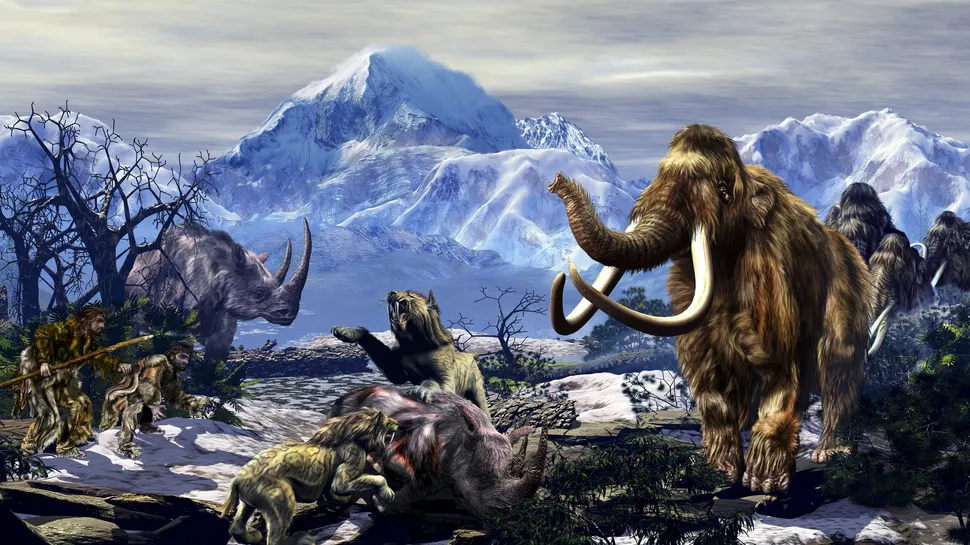 |
| Scientists claim they possess the technology and genetic material necessary to revive extinct species. (Image credit: Kurt Miller/Stocktrek Images via Getty Images) |
De-extinction, the science of resurrecting extinct species, is progressing rapidly. Scientists are working on bringing back creatures that vanished due to human activity, climate change, and other factors. Using advanced genetic technologies, researchers are closer than ever to making de-extinction a reality. Here are six species that could return to Earth in the near future.
1. Woolly Mammoth
The woolly mammoth (Mammuthus primigenius) once roamed vast areas of Europe, North America, and Asia during the Ice Age. A combination of climate change and human hunting drove the species to extinction around 4,000 years ago. Scientists have extracted well-preserved DNA from frozen mammoth remains and are working on inserting key mammoth genes into modern elephants. Colossal Biosciences, a U.S.-based company, aims to produce the first "mammoth" calves by 2028.
2. Dodo
 |
| Dodos (Raphus cucullatus) became extinct due to the direct impact of European colonization in Mauritius. (Image credit: Daniel Eskridge/Stocktrek Images via Getty Images) |
The dodo (Raphus cucullatus) was a flightless bird native to Mauritius that went extinct in 1681 due to European colonization. It fell victim to hunting, habitat destruction, and invasive species introduced by humans. In 2022, scientists successfully sequenced the dodo’s genome, and researchers are now exploring ways to recreate the bird. Since dodos hatched from eggs, scientists believe bringing them back could be easier than reviving large mammals.
3. Thylacine (Tasmanian Tiger)
 |
| The last thylacine (Thylacinus cynocephalus) died in captivity in 1936. (Image credit: HUM Images/Universal Images Group via Getty Images) |
The thylacine (Thylacinus cynocephalus), also known as the Tasmanian tiger, was a carnivorous marsupial that went extinct in 1936 due to hunting and habitat destruction. Researchers have identified well-preserved DNA samples, but the genome remains highly fragmented. Scientists from the University of Melbourne and Colossal Biosciences are working to reconstruct a complete genome and use a related species, such as the numbat or Tasmanian devil, as a surrogate for cloning.
4. Passenger Pigeon
 |
| A photo of the last male passenger pigeon (Ectopistes migratorius), who passed away in 1912. (Image credit: Bettmann via Getty Images) |
Once the most abundant bird in North America, the passenger pigeon (Ectopistes migratorius) went extinct in 1914 due to excessive hunting and habitat loss. Scientists have extracted DNA from preserved museum specimens, but because the DNA is fragmented, researchers plan to insert passenger pigeon genes into band-tailed pigeons. The biotech company Revive & Restore aims to hatch the first modified pigeons by 2025.
5. Aurochs
 |
| Humans drove aurochs (Bos primigenius) through overhunting and habitat destruction. (Image credit: Bonnafe Jean-Paul/Getty Images) |
Aurochs (Bos primigenius), the ancestors of modern cattle, were giant wild bovines that roamed Europe, Asia, and North Africa. They were hunted to extinction in 1627. Unlike other de-extinction projects, scientists are using "back-breeding"—selectively breeding modern cattle with aurochs-like traits—to recreate a species similar to the original aurochs. The project is making progress, with current generations of cattle closely resembling their extinct ancestors.
6. Quagga
 |
| The quagga (Equus quagga quagga) became extinct in the late 19th century. (Image credit: Image from the Biodiversity Heritage Library. Contributed by Harvard University, Museum of Comparative Zoology, Ernst Mayr Library Rights holder: Zoologische Staatssammlung München | www.biodiversitylibrary.org CC BY-NC-SA 4.0) |
The quagga (Equus quagga quagga) was a subspecies of the plains zebra that had a distinctive striped front half and a solid-colored rear half. It was hunted to extinction in the 19th century, with the last known quagga dying in 1883. The Quagga Project in South Africa is selectively breeding plains zebras with reduced striping to produce quagga-like offspring. Scientists are also exploring the possibility of cloning the quagga using preserved DNA.
The Future of De-Extinction
Bringing back extinct species raises ethical and environmental questions. Some scientists worry about how reintroduced species might impact modern ecosystems, while others argue that resources should focus on conserving existing endangered species. Nevertheless, de-extinction technology continues to advance, and in the coming decades, we may witness the return of creatures long thought lost to history.
What do you think? Should scientists bring back extinct species, or should they focus on protecting those still alive today? Let us know your thoughts in the comments!



Post a Comment
0Comments